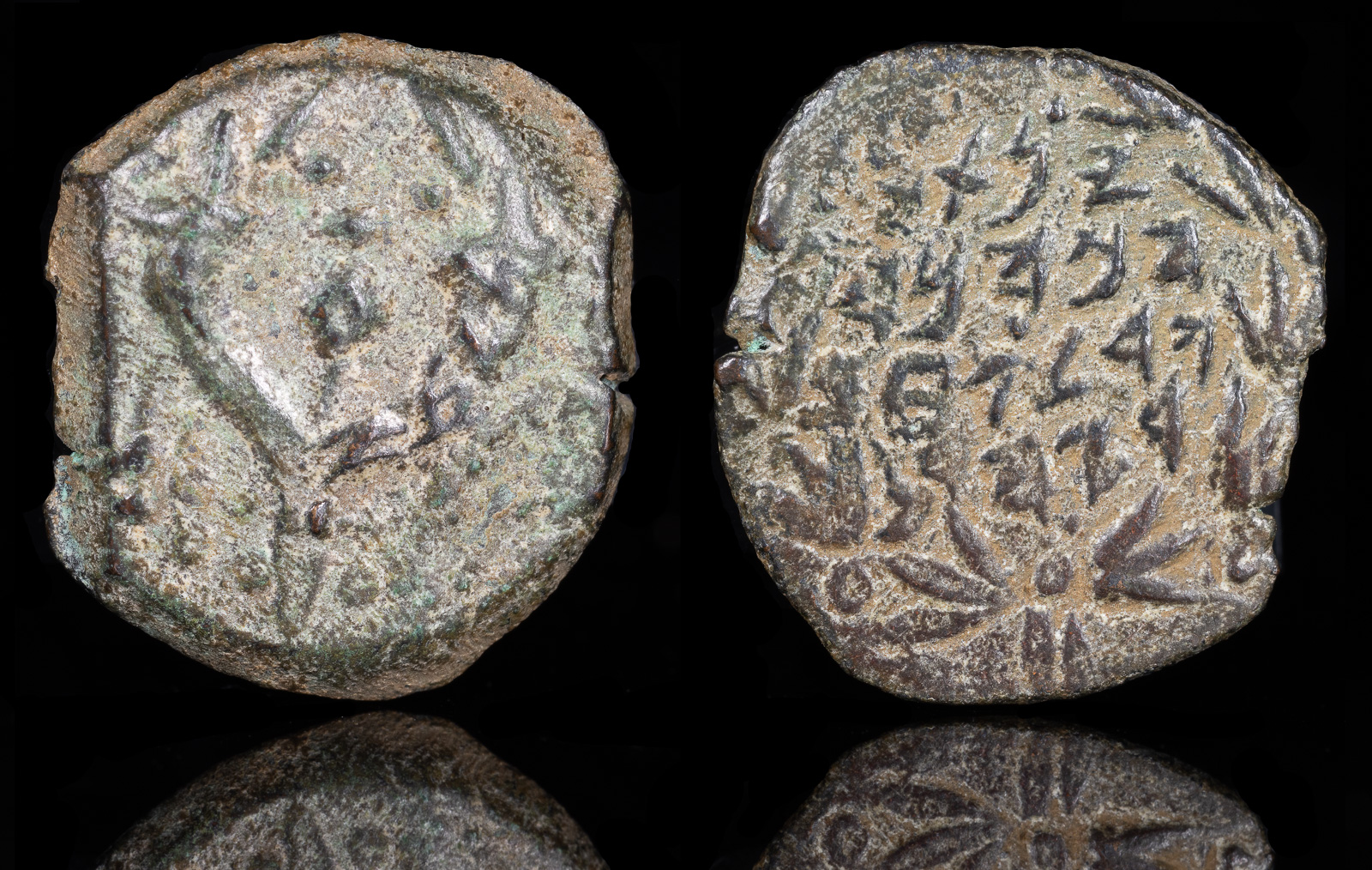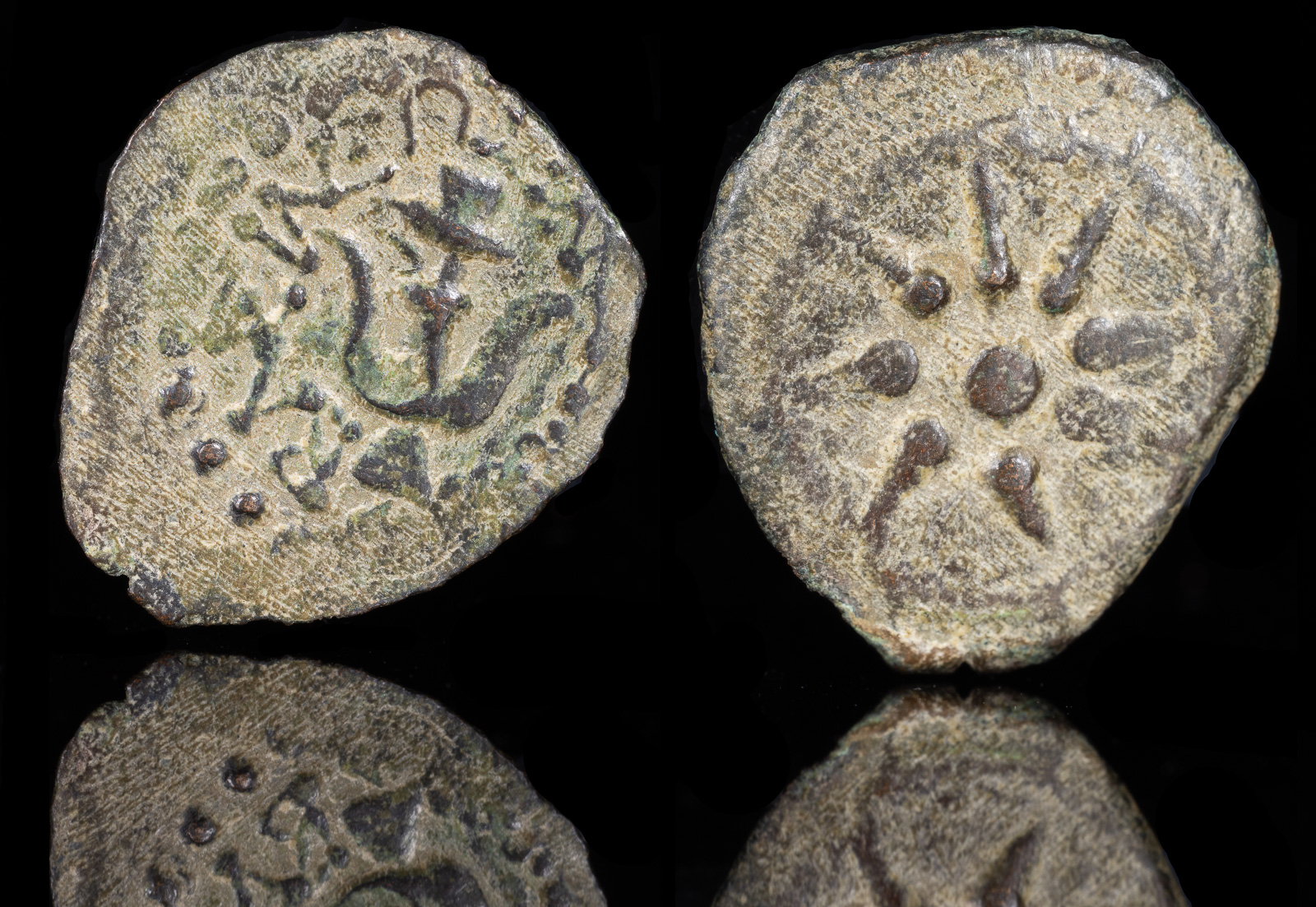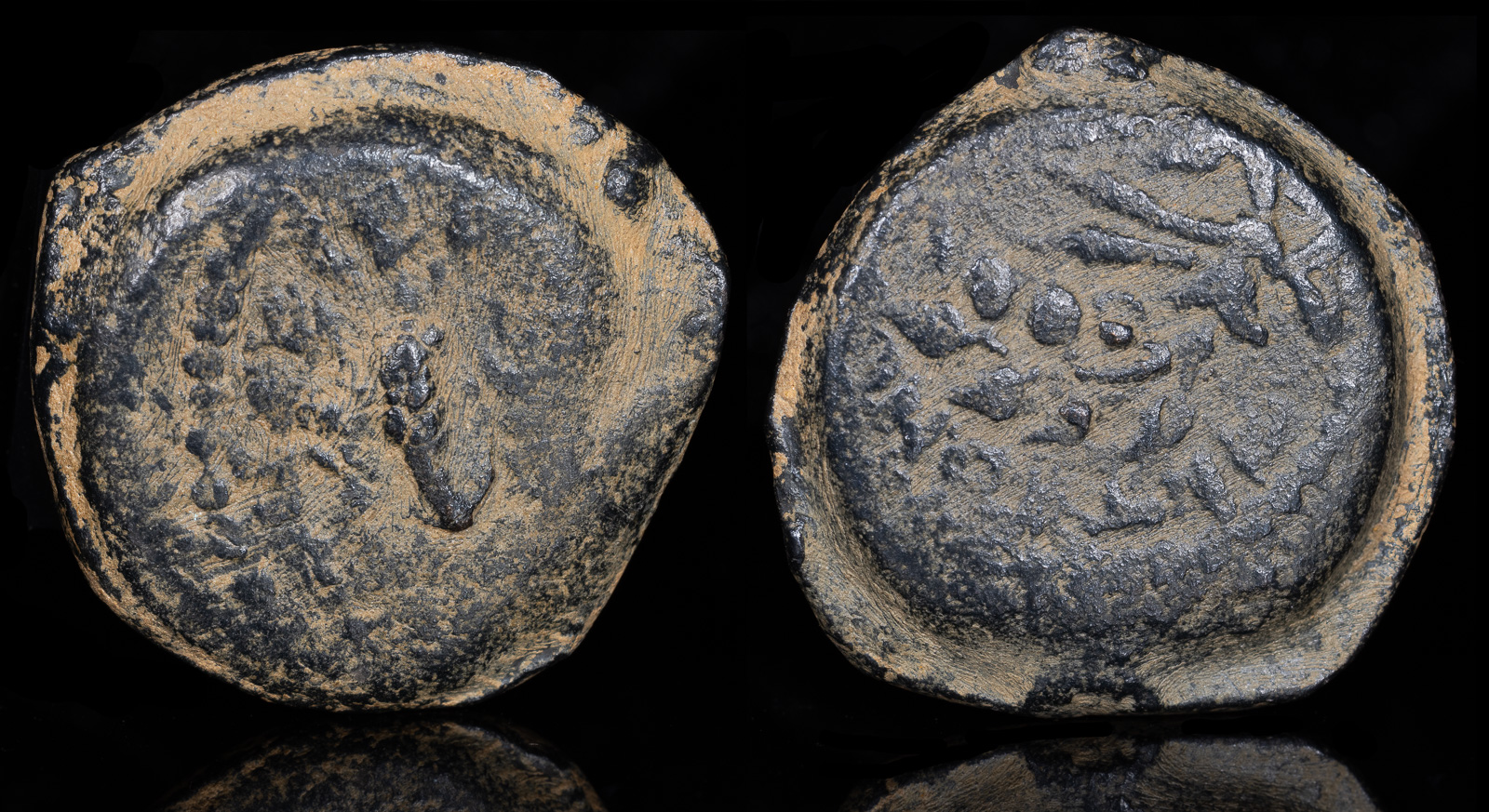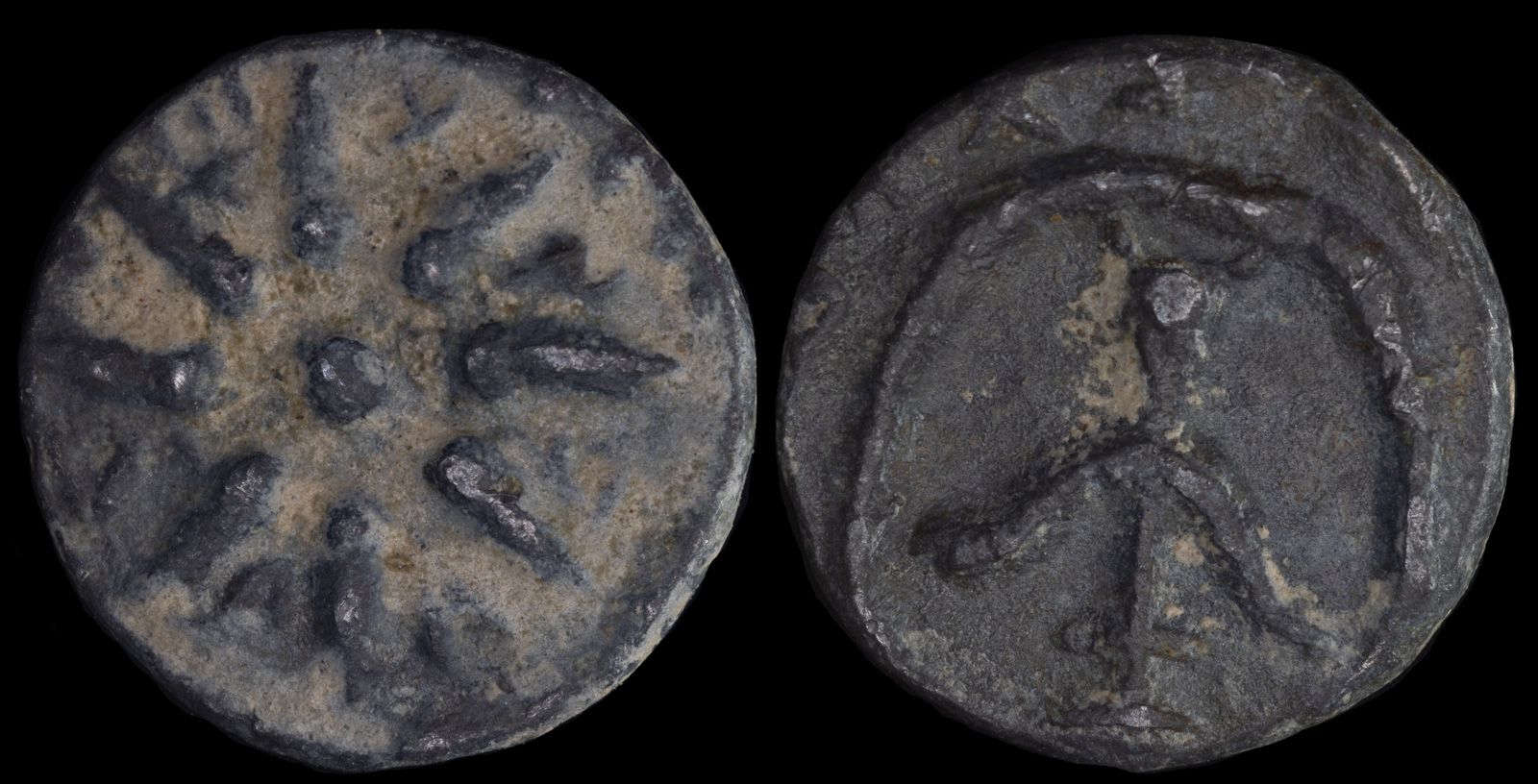
Judaea. Jerusalem. John Hyrcanus I
135-104 BCE
Prutah Æ 15 mm, 2,27 g
Ex Tareq Hani collection
Ex Savoca
The Hasmonean kings have long been collected simply for the geographical area they controlled. They were also Jewish kings, though among them were some of the cruelest kings in history. Hyrcanus was the first to achieve some independence from the Seleukids.

Judaea. Jerusalem. Hasmoneans. Alexander Jannaios (Yehonatan)
103-76 BCE
Prutah Æ 15 mm, 0,80 g
Star of eight rays surrounded by diadem /
Upright anchor
Meshorer Group K; Hendin 1150; HGC 10, 637
Ex Tareq Hani collection
His son, Alexander Jannaios, was infamous for dining while two thousand rebels and their children were crucified.

Judaea. Jerusalem. Mattathias Antigonos (Mattatayah)
40-37 BCE
Eight Prutot Æ 25 mm, 17,06 g
Double cornucopia / Wreath
Meshorer 36; Hendin 6197
Ex Tareq Hani collection

Alexander Jannaeus
103 – 76 BCE
Judaea, Hasmonean Kingdom : Jerusalem mint
Ae Prutah 12.5mm, 1.7gms
Obv: Aramaic legend within rays of eight-rayed star
Rev: BASILEWS ALEXANDPOY around inverted anchor within circle
Hendin 1152 var
Mattathias Antigonos was the last Hasmonean king. He was executed by the Romans under a request from Herod I.

Judaea. Jerusalem or Samarian mint. Herodians. Herod I (the Great)
Dated RY 3 (37 BCE)
2 Prutot Æ 16mm, 2,95 g
Poppy on stalk /
ΗΡΩΔΟΥ ΒΑΣΙΛΕΩΣ, winged caduceus flanked by LΓ (date) and monogram.
Hendin 6206; TJC 46; RPC I 4903
Herod the Great is of course infamous for his palace that may be visited at Masada and other large building projects.

Judaea. Jerusalem. Herodians. Herod II Archelaos
4 BCE-6 CE
Prutah Æ 17 mm, 2,29 g
EΘNAPXOY, crested helmet with cheek straps, viewed from front; caduceus to lower left /
HPWΔOY, bunch of grapes on vine with small leaf on left
Hendin 6227; TJC 73; RPC I 4917
Ex Tareq Hani collection
Herod II was the son of Herod the Great.
Death of Mattathias, who started the Maccabean Revolt of Judea against the Seleukid Empire. Judas Maccabee continues the revolt.
Judah Maccabee is killed in the Battle of Elasa. His brother Jonathan continues the revolt.
Jonathan is killed by Diodotos Tryphon. His brother Simon continues the Hasmonean Dynasty.
February
Simon and two of his sons are assassinated at a banquet. John Hyrkanos continues the Hasmonean Dynasty.
John Hyrcanus I, the Hasmonean ruler of Judea, conquers Idumea and forcibly converts the Idumeans to Judaism. Idumea is formally integrated into the Hasmonean kingdom.
John Hyrcanus destroys Samaria.
Death of John Hyrkanos. Aristobolos I continues the Judean Kingdom.
Death of Aristobolos I. Alexander Jannaios becomes the ruler of Judea.
Alexander Jannaios besieges Gaza for a year, then kills all the inhabitants and destroys it.
Straton’s Tower (later named Caesaria Maritima) is captured by the Judean king Alexander Jannaios.
Death of Alexander Jannaios at the Siege of Ragaba. Queen Salome continues in Judea.
Death of Salome, who had led Judea into prosperity. Her son Hyrkanos II becomes ruler.
Hyrkanos II has his ears removed and is then led as a captive to Babylon. Antigonos II Mattatias is installed as ruler of Judea.
Herod the Great, of Idumean descent, is installed as king of Judea by the Romans. His rule brings stability and extensive building projects in the region, including in Idumea.
Antigonos II Mattatias is taken to Antioch and executed. This ends the Hasmonean line.
Straton’s Tower is given to Herod I, who renamed it to Caesarea Maritima in honor of Augustus.
Herod I rebuilds Samaria.
Herod I begins construction of the harbor at Caesarea Maritima.
Herod I of Judea funds a stoa on Chios.
Judea, including Edom, becomes a Roman province. Caesarea Maritima replaces Jerusalem as the capital.
Hadrian suppresses the Kitos War in Judea.
Hadrian visits Judea and decides to rebuilt the ruined Jerusalem as Aelia Capitolina.
Bar Kokhba Revolt breaks out in Judea during Hadrian‘s reign.
Forces under Hadrian quell the Bar Kokhba revolt in Judea, leaving roughly 580,000 Jews dead. Many of the survivors are enslaved.
Helena begins a trip to Judea.
August 31
The author and his wife visit Masada, including the Palace of Herod I. It is extremely hot.